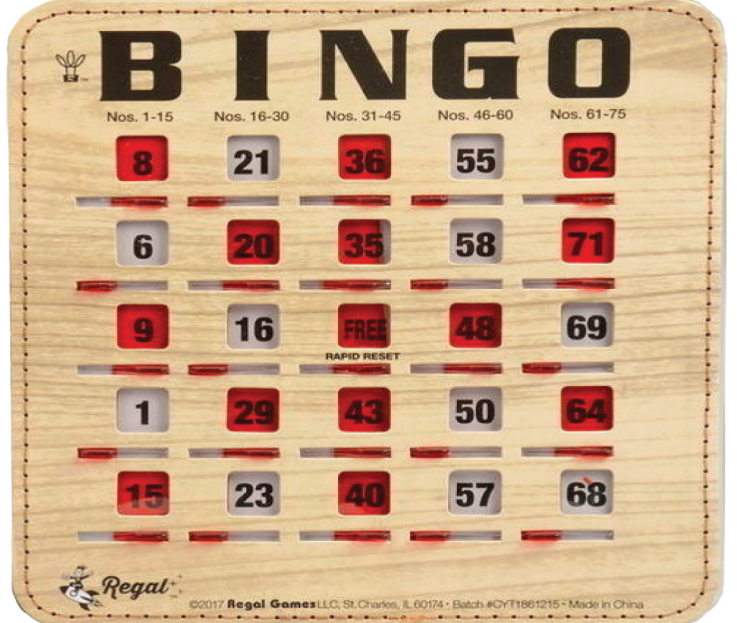Having more bingo cards can increase winning chances, but it also demands better tracking skills.
Understanding the Basics of Bingo
Bingo is a popular game of chance where players match numbers drawn at random to numbers on their cards. Originating in Italy in the 16th century, it has since gained widespread appeal, especially in the US and UK, becoming a staple in both entertainment and charitable events.

Brief History of Bingo
Bingo traces its roots back to the “Lo Giuoco del Lotto d’Italia,” a weekly lottery in Italy that started in 1530. From Italy, the game traveled to France in the late 1770s, where it was called “Le Lotto” and was primarily played among the French aristocracy. In the 1920s, the game made its way to the US and was originally known as “beano.” It was renamed “Bingo” when a New York toy salesman, Edwin S. Lowe, overheard someone accidentally yell “Bingo” instead of “Beano”. He saw the marketing potential and popularized the name we know today. More on the history can be found on Wikipedia.
Rules and How to Play
The basic premise of Bingo is simple: Players are given cards with a matrix of numbers, often 5×5 for the standard version. A caller randomly selects numbers, and if that number appears on a player’s card, they mark it off. The goal is to form a predetermined pattern (like a line or a full house) before anyone else. When a player achieves this, they shout “Bingo!” to claim their win.
There are variations in rules based on region and game type. For example, the cost to play can range from free (often in casual or family settings) to $20 or more in formal bingo halls. Prizes vary too, with some games offering a fixed prize of $100, while others might offer a jackpot based on the number of players and cards purchased.
Different Variations of Bingo
There are several variations of Bingo that cater to different preferences and add unique twists:
- 75-ball Bingo: Predominantly played in North America, this variation uses cards with a 5×5 grid. The center square is usually a free space.
- 90-ball Bingo: Popular in the UK and Australia, this version has three rows and nine columns. Players can win by completing one row, two rows, or all three (a full house).
- 80-ball Bingo: A more modern take on the game, using a 4×4 grid, often found in online bingo sites.
- 30-ball Bingo: Also known as “speed bingo,” this fast-paced version uses a 3×3 grid and is over quickly, making it perfect for those looking for a swift game.
Different variations can sometimes mean different card prices, ranging from a few cents to several dollars. The size of the jackpot or prize also varies, with some progressive jackpots reaching tens of thousands of dollars, especially in high-stakes online bingo games. Players need to be aware of these factors, including the efficiency of their chosen game type and any potential downsides such as increased competition or higher costs. For a deep dive into the variations, you might want to explore this Wikipedia article.
Pros of Having More Bingo Cards
Playing bingo with multiple cards is a strategy employed by many seasoned players. This approach offers a number of distinct advantages, which we’ll delve into below.
Increased Chances of Winning
By sheer probability, having more bingo cards means having more opportunities to hit the winning numbers. Suppose in a standard game of 75-ball bingo, one card gives you a 1 in 75 chance of having the first number called. If you possess ten cards, theoretically, that chance increases to 10 in 75. Over the course of a game, this statistically enhances the likelihood of forming the required pattern and yelling “Bingo!” before anyone else. To put it in perspective, with one card, your odds might be 1 in 100, but with ten cards, it could reduce to about 1 in 10, depending on the game’s specifics. This Wikipedia page on Probability can give deeper insights into the calculations.
More Engagement and Excitement
Holding multiple cards amplifies the thrill and involvement in the game. Each number called is a potential match on not just one, but possibly several of your cards. This constant activity ensures players remain alert, engaged, and invested in every call. This heightened excitement might be likened to watching multiple horse races simultaneously, where each race’s outcome affects your overall stake. There’s a sense of continuous momentum and exhilaration, especially when multiple cards come close to winning patterns simultaneously.
Maximizing Multi-card Strategies
Using multiple cards allows players to adopt certain strategies that single-card players cannot employ. For instance:
- Diversification: Like in investment, diversifying your cards can increase the likelihood of returns. With a variety of number spreads across cards, you stand a better chance of having a hit with every number called.
- Pattern Targeting: Some experienced players aim for specific patterns by choosing cards that complement each other. For example, if one card is close to completing a horizontal pattern, another might be close to a vertical or diagonal, increasing the chances of achieving at least one winning pattern.
- Budgeting and Stakes Management: If you’re playing in a setting where card price varies (say between $1 to $5 per card), holding multiple cards can help in managing and balancing your overall stake. For instance, you might buy eight $1 cards and two $5 cards, maximizing both your spread and your potential returns, all while sticking to a $20 budget.
It’s worth noting, though, that while these strategies can increase your odds, bingo remains a game of chance. The speed and quality of one’s wins can never be guaranteed, as can be seen in various analyses on Wikipedia’s Game Theory page.
Cons of Having More Bingo Cards
While there are evident advantages to playing with multiple bingo cards, there are also notable downsides that players should consider. These challenges can sometimes counterbalance the benefits, depending on the player’s experience, mindset, and the particular game circumstances.

Management and Tracking Difficulties
One of the primary challenges of playing with multiple cards is the increased difficulty in managing and tracking all of them simultaneously. A player with a single card can quickly glance and mark off numbers. However, a player juggling ten or fifteen cards must rapidly scan each one, risking mistakes or missing a number. It’s akin to multitasking in everyday life, where handling too many tasks at once can lead to errors or oversights. Moreover, while a single card requires a few seconds for scanning, ten cards might mean the player spends the majority of their time searching for numbers, which can be mentally exhausting. There are tools and techniques for efficient multitasking, but even with these, there’s a limit to human attention and accuracy.
Increased Financial Cost
The financial implications of playing multiple cards are straightforward. If one card costs $2, ten cards will cost $20. In games where the cost of entry isn’t fixed, choosing to play multiple cards can quickly ramp up expenses. Over several games, this can mean a significant outlay. Players need to be wary of their budget. It’s possible to get lured into the potential of increased winnings and overspend, only to end up with losses. Just like in gambling scenarios, budgeting and understanding the risk-reward ratio is crucial.
Potential for Overwhelm and Reduced Enjoyment
For many, bingo is a leisure activity, a time to relax and have fun. The added pressure of managing multiple cards can convert this leisurely pursuit into a high-stress situation. Players might feel overwhelmed, especially in fast-paced games where numbers are called rapidly. The essence of enjoyment can be lost, replaced by the anxiety of missing a number or the disappointment of not marking cards quickly enough. The game’s speed and quality can shift from a laid-back social activity to a high-intensity challenge, potentially reducing the overall fun and recreational value.
In conclusion, while multiple cards can offer increased chances of winning in bingo, it’s crucial for players to weigh these benefits against the potential pitfalls. Each player’s tolerance and preference will differ, so understanding oneself and the game’s dynamics is key to making the right choice.
Strategies for Multi-card Bingo Play
Playing with multiple bingo cards elevates the game’s complexity, turning it from a simple leisure activity to a more strategic endeavor. Employing effective strategies becomes essential for those looking to maximize their chances of winning without becoming overwhelmed. Here are some detailed tactics that can aid multi-card bingo players.
Organizing Cards Effectively
A well-organized playing area can make a significant difference in a player’s ability to track multiple cards.
- Card Layout: Arrange your cards in a grid format on the table, rather than stacking or overlapping them. This way, all numbers are visible at a glance, reducing the time spent searching for a specific number. If you have ten cards, a 2×5 or 5×2 layout might be optimal.
- Use Highlighters: Different colored highlighters or daubers can be used for different patterns or games. This visual differentiation can speed up recognition and reduce errors.
- Clear the Clutter: Ensure that your playing area is free from unnecessary items. Only essential tools like markers, spare cards, and perhaps a drink should be within arm’s reach. This minimizes distractions and helps maintain focus.
For more insights on organizing techniques, consider exploring organizational psychology.
Pacing and Timing Considerations
How you pace yourself during the game can have a big impact on your success and enjoyment.
- Stay Calm: It’s easy to get flustered when numbers are called quickly. Take deep breaths and maintain a calm demeanor. Rushing can lead to mistakes.
- Practice with Simulations: Before attending a real multi-card bingo game, consider practicing with online simulations. Many websites offer multi-card bingo games where the pacing can be adjusted. Starting slow and gradually increasing the speed can help improve your efficiency over time.
- Know When to Pause: If you miss a number or feel overwhelmed, it’s okay to take a moment to regroup. Most bingo halls or online platforms allow players to review called numbers. Using this feature wisely can ensure you don’t miss out.

Understanding the Odds
Knowledge is power. By understanding the odds, players can make informed decisions about how many cards to play and what patterns to target.
- Do the Math: Recognize that while more cards increase your chances of winning, they don’t guarantee a win. For example, in a game with 100 players each holding a single card, holding ten cards would improve your odds tenfold. But in a game where everyone holds ten cards, buying an eleventh card only provides a slight edge.
- Pattern Probabilities: Different bingo patterns have different odds of appearing. A simple line might be more likely than a complex pattern. Understanding these probabilities can help in choosing which cards to play.
- Stay Informed: Sites like Wikipedia offer deep dives into probability theory. While bingo is largely a game of chance, a basic understanding of these principles can aid in strategy formation.
To conclude, multi-card bingo play is both challenging and rewarding. With the right strategies, players can enhance both their chances of winning and their overall enjoyment of the game.
Case Studies: Successes and Failures of Multi-card Players
In the world of bingo, numerous tales capture both the elation of victory and the despair of loss. These stories, especially from multi-card players, offer rich lessons on strategy, risk management, and human nature. Delving into some prominent case studies sheds light on the multifaceted game of bingo and how different approaches can lead to varied outcomes.
Famous Multi-card Bingo Wins
- John’s Big Win: In 2018, John L., a retiree from Florida, hit the headlines when he won a whopping $50,000 jackpot in a local bingo tournament. John was known for his unique strategy: he consistently played with 20 cards every game. His rationale? By spreading his chances, he could cover more patterns and combinations, and that particular day, his strategy paid off massively.
- The Sisters’ Duo: In 2019, two sisters from Texas, Emily and Maria, shared a cumulative prize of $30,000. Their secret? Collaborative play. They would jointly purchase 30 cards, splitting them 15 each, and then sit side by side, helping each other spot numbers and patterns. Their cooperative strategy made headlines and showcased the potential benefits of teamwork in multi-card bingo.
For more on famous bingo victories, check out this history of bingo winners.
Lessons from Players who Over-extended
- Amanda’s Tale: Amanda, a 35-year-old from New York, loved playing bingo. At the height of her enthusiasm, she started playing with 50 cards at a time, believing it would increase her chances exponentially. However, she quickly found herself overwhelmed, missing out on potential wins because she couldn’t track all her cards. In one notable game, she missed out on a $10,000 win because she didn’t spot a winning combination in time. Her story is a cautionary tale about the risks of over-extension.
- Tom’s Financial Drain: Tom, an avid bingo player from California, consistently bought the maximum number of cards allowed in his bingo hall, believing it was a sure-fire way to a win. Over a year, he spent approximately $15,000 on bingo cards. Despite some minor wins, his overall losses amounted to around $12,000, a stark reminder of the financial risks involved in not setting a budget.
A deeper understanding of the pitfalls can be gained from this overview of gambling risks.
The Optimal Number of Cards for Different Players
It’s clear that there’s no one-size-fits-all answer when it comes to the number of bingo cards one should play. However, some guidelines can help players make informed choices:
- Beginners: For those new to bingo, starting with 1-3 cards is advisable. This allows novices to get a feel for the game without feeling overwhelmed.
- Intermediate Players: As players gain confidence, they can consider playing with 4-10 cards. This range offers a balance between increased chances and manageability.
- Experts: Veteran players, who are quick to spot numbers and patterns, can venture into the 10-20 card range. However, even experts should be wary of overextending and should always prioritize enjoyment over potential wins.
To understand the psychology behind decision-making in games, you might find this article on game theory interesting.
In summary, multi-card bingo play is a dance between strategy, chance, and human intuition. By studying the successes and failures of those who’ve walked this path before, players can refine their approach and, hopefully, find their sweet spot in the exhilarating game of bingo.

